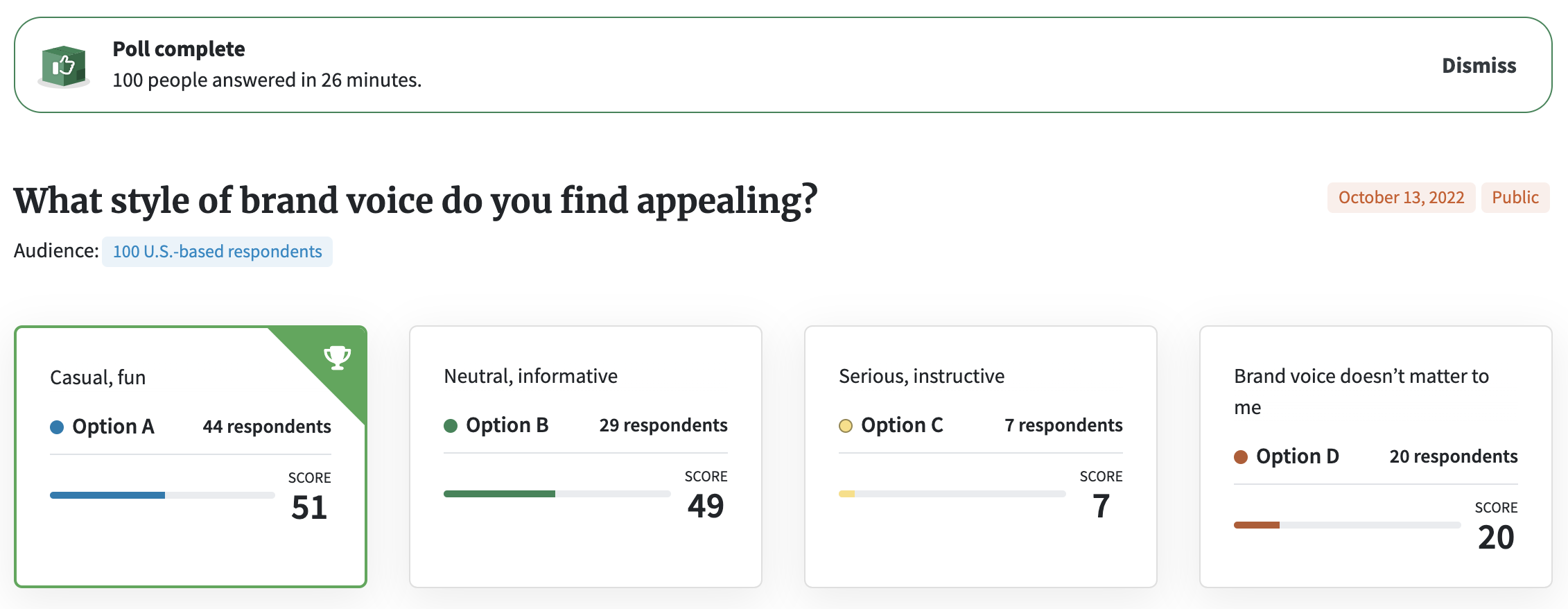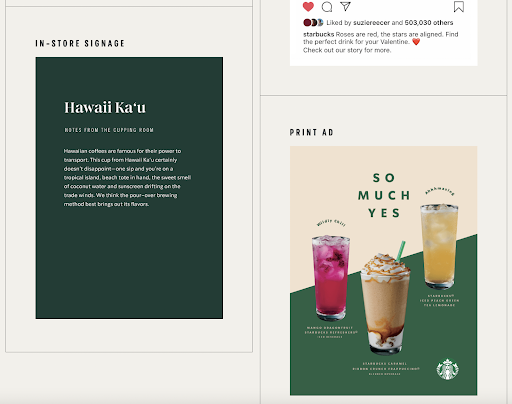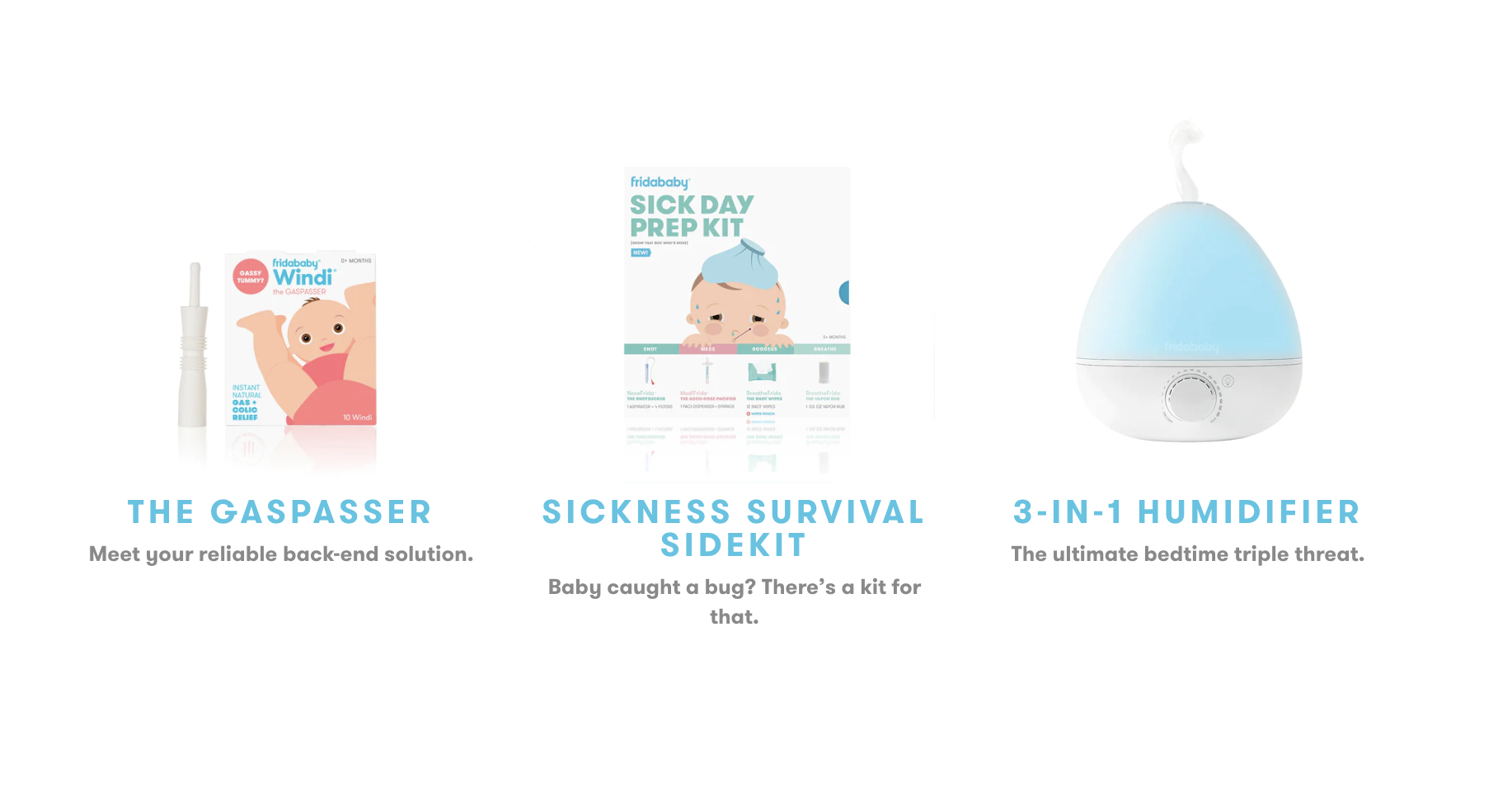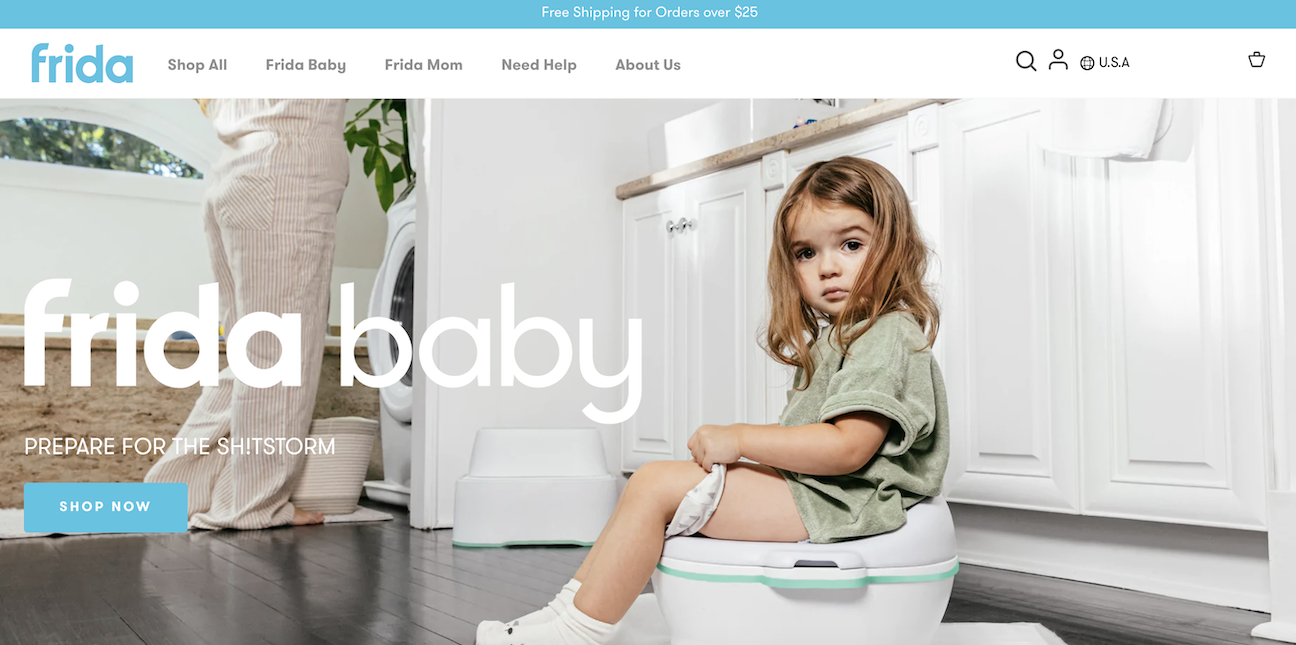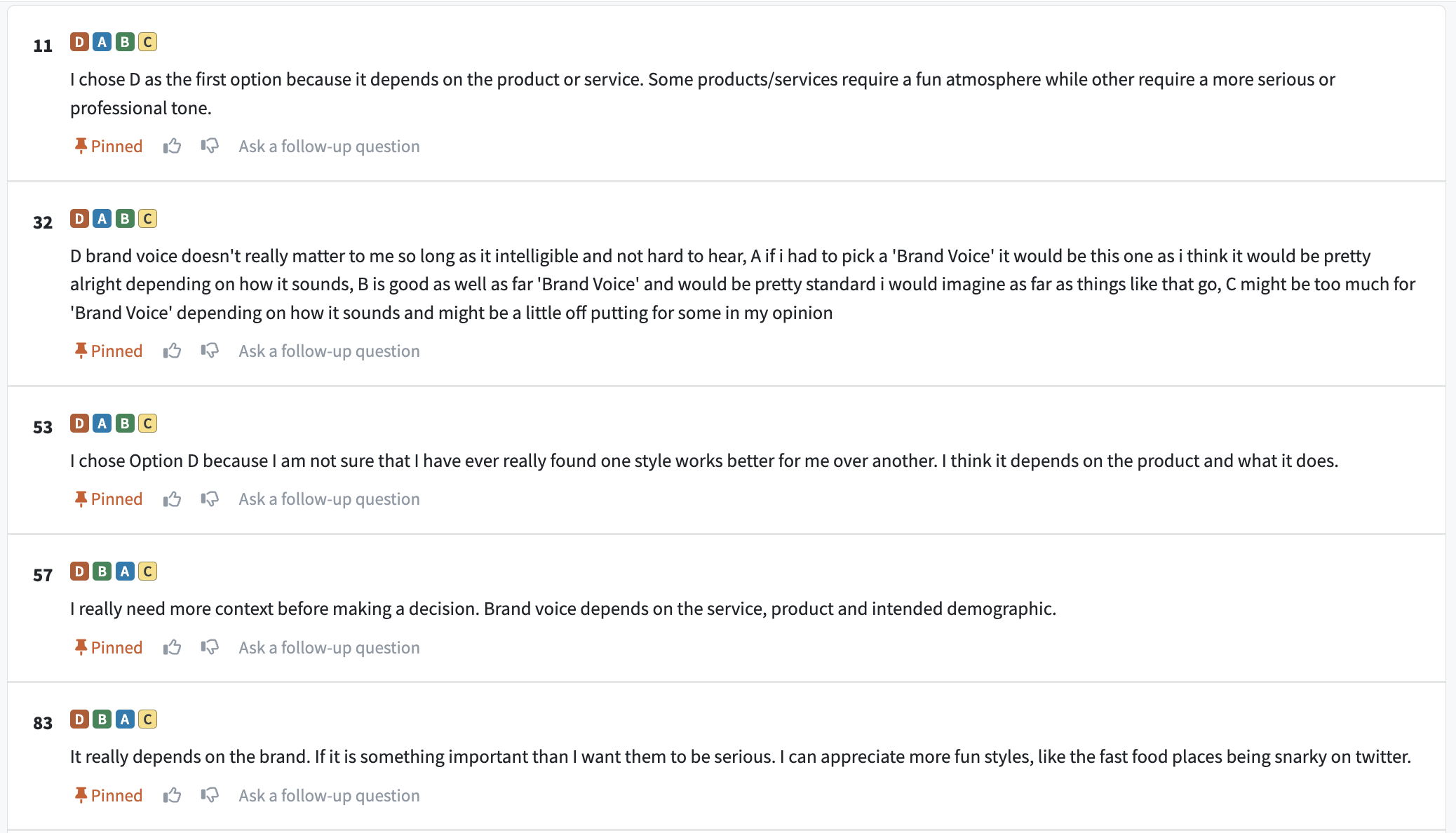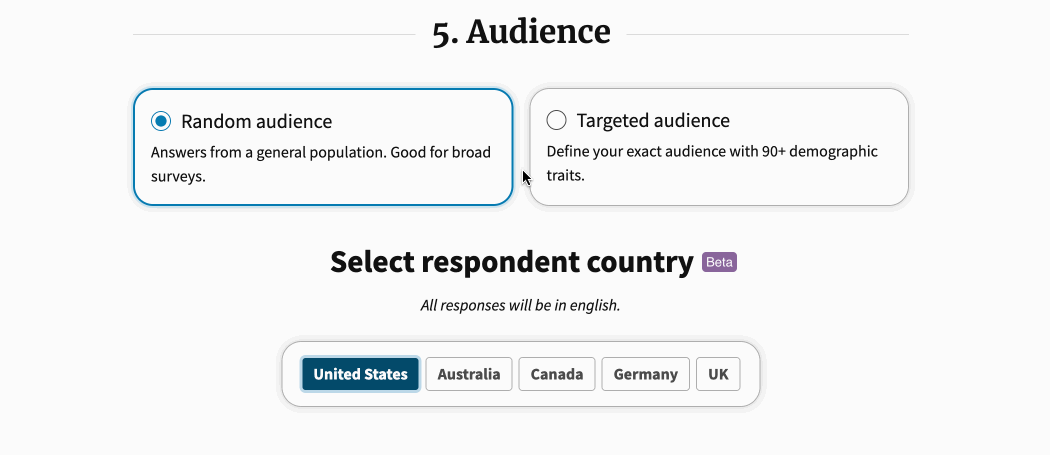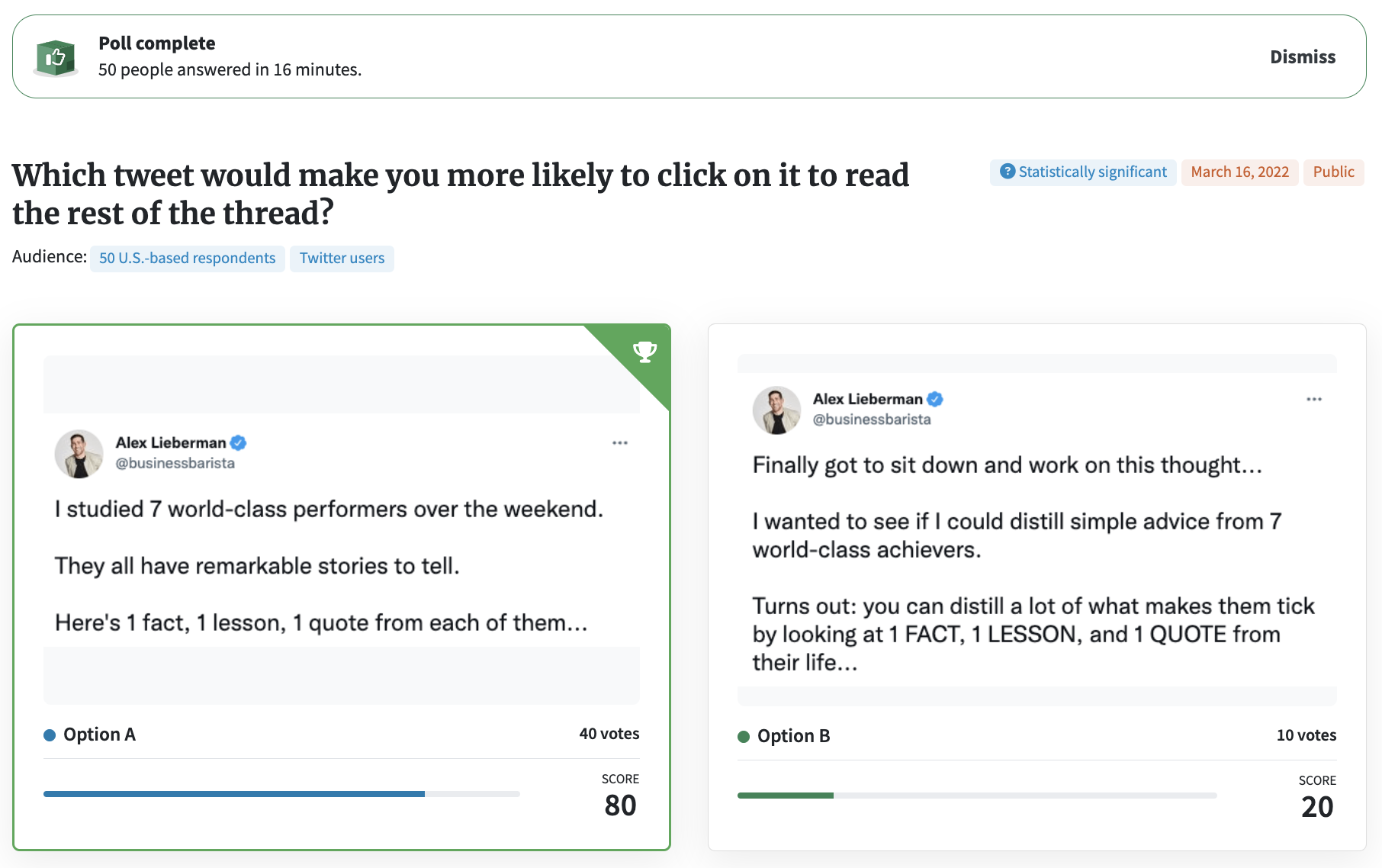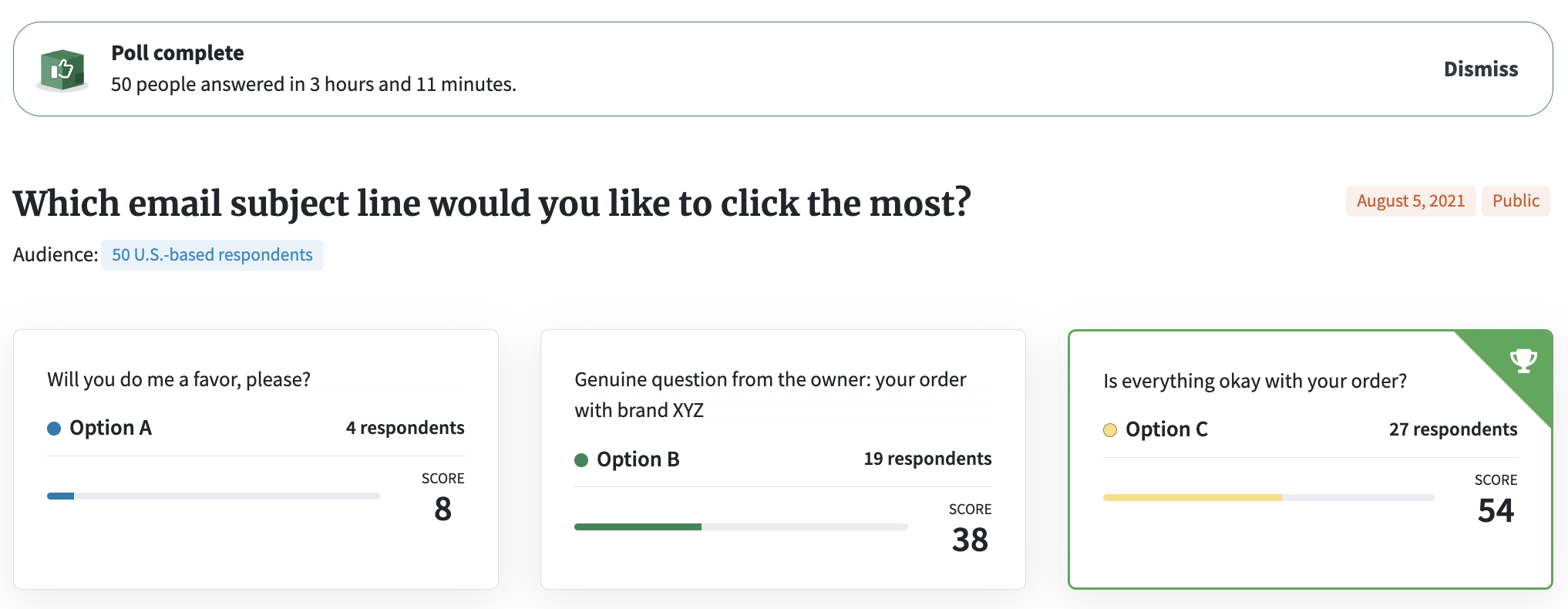How do you create your brand personality? By developing both your brand voice and tone of voice.
If you don’t understand the difference in tone vs. voice, you risk making costly branding mistakes.
Today, we’ll break down the difference. We’ll discuss what defines a brand’s unique voice and how to find the appropriate tone for different situations.
Having a clear brand personality across your website copy and marketing materials builds trust with your target audience. It helps them get to know you. It lets them know what to expect.
And it all starts with voice and tone.
Use these links to navigate our article:
- Survey insight: Customers want brands to have a voice
- Tone vs. voice: What’s the difference?
- Examples of voice and tone
- Why do tone and voice matter?
- How to define your brand voice
- How to choose the right tone
- How to test your brand voice
- You can’t have brand personality without voice and tone
Survey insight: Customers want brands to have a voice
Does brand voice matter to consumers? Do they notice different styles of brand voice? We turned to PickFu’s respondent panel to find out.
We asked 100 U.S.-based respondents which style of brand voice they find appealing: casual and fun, neutral and informative, or serious and instructive. Or does brand voice not matter at all?
Brand voice does matter, our poll results show. Respondents ranked a casual, fun brand voice as most appealing, followed closely by a neutral, informative one.
A casual, fun voice “makes the brand interesting” and “welcoming,” our panel said.
One person pointed out the irreverent nature of insurance ads: “40 years ago they might have been more serious but now it’s all comedy.”
Does this mean every business should aim to have a playful brand voice?
Of course not. As some respondents made clear, your distinct voice must match the services you offer. It wouldn’t be appropriate for a funeral home to have a light-hearted brand voice.
That said, even serious companies can weave their personality into content like social media posts.
Bottom line? Brand voice and context go hand in hand.
Tone vs. voice: What’s the difference?
Voice reflects your personality as a brand. Tone takes your brand personality a step further and changes based on the context.
In other words, voice anchors every piece of content you put out. It helps your target audience know what to expect from your brand, which builds trust.
Tone changes according to the type of content you’re creating. A company that uses a playful tone on social media might publish informative blog posts that are more thoughtful and toned down.
So in a single piece of content, your brand voice represents who you are as a brand, while tone lets your audience know the type of content you’re putting out.
There’s one more thing to consider: mood.
Mood is what it sounds like — the way your content makes a person feel.
Take the hypothetical funeral home business. A blog post about marking a loved one’s birthday after they’ve died could have a comforting tone with a hopeful mood.
A post about making funeral arrangements, on the other hand, might have the same comforting tone but a somber mood.
Mood can even change within an advertisement as you take your audience on a journey from one point to another.
To keep things consistent across your brand and the content your produce, it’s a good idea to create a content style guide. Your style guide should define your brand personality and the tone you want to use for each piece of content or media you publish.
Examples of voice and tone
Some brands have made their brand voice and tone guide publicly available, including Starbucks.
The company’s website details Starbucks’ writing voice, tone guide, and brand colors, along with concrete examples of each.
In the image below, notice how Starbucks’ in-store signage, Instagram captions, and print ads all reflect the company’s playful brand personality.
But each piece of copy has a different tone.
The tone of the in-store signage on the left is informative and creative. In three sentences, it gives you a snapshot of where the coffee is from, what that particular brew can do for you, and how best to enjoy it.
Starbucks’ Instagram caption on the top right has a dreamy, romantic tone that encourages readers to gift their significant others with the perfect drink.
And the print ad takes a punchy, lively tone.
Frida Baby is another company that uses tone vs. voice effectively.
The company embraces the point of view that parenting can be messy and gross. But never fear, for Frida Baby is here to help you soldier through the puke, boogers, and poop with their “back-end solution” gaspasser (how great is that pun?), sickness survival kit, and humidifier.
Frida Baby’s brand voice is honest, no-nonsense, and caring, like a wise grandmother who’s seen it all and knows exactly how to help you.
But its tone changes to fit the product or situation.
Take the tagline on the company’s homepage: “Prepare for the shitstorm.” It sits next to an image of a toddler on a potty, looking straight at you with don’t-mess-with-me eyes.
Now compare that with the product description for Frida Baby’s incomplete pregnancy recovery kit, shown in this image:
There’s no humorous tone here, only compassion and understanding.
The product description makes no assumptions about the circumstances that would compel a person to buy this kit. It offers information in a supportive tone, characteristic of its brand voice.
For more on what goes into an effective product description, read our guide to writing Amazon product descriptions.
Test your ads and copywriting on PickFu. Sign up free and run a poll.
Why do tone and voice matter?
Tone and voice matter because they define a brand’s personality and create brand perception.
They impact your customers’ emotional state, allowing them to connect with a piece of writing or an advertisement.
Tone and voice also build trust between you and your audience.
Take a look again at the comments from the poll we mentioned at the beginning of this article. Even for the 20% of respondents who ranked Option D first (“Brand voice doesn’t matter to me”), it’s clear that word choice, writing style, and other elements of brand voice do matter to them.
“It really depends on the brand,” one respondent said. “I can appreciate more fun styles, like the fast food places being snarky on Twitter.”
Research shows tone of voice directly affects a consumer’s perception of a brand as friendly and trustworthy. It could even make them more likely to recommend the brand.
On the flip side, being inconsistent or careless with your brand voice or tone can lead to branding fails that hurt your brand and offend your customers — things you want to avoid at all costs.
How to define your brand voice
It’s time to gather your team, get out your whiteboard or notebook, and define — or redefine — your company’s brand voice.
Take your time with each of these four steps:
- Explore your values and value proposition. Review the hole you fill in your market, who your target audience is, and what your company values are.
- Analyze your competition. Look at websites, ads, and blogs produced by your competitors. Which voices resonate with you the most, and why?
- Just PickFu it to collect consumer feedback. Run a PickFu Open-Ended poll with your target audience. Give a description of your company, values, and products, then ask respondents what type of brand voice they’d expect from your company. Pay attention to the words and phrases respondents use in their written feedback.
- Create your collateral. Using information gathered in the previous steps, put together examples of your print and digital ads, email newsletters, social media posts, and other collateral.
Once you have samples, you’ll be ready to show them to your target audience.
But first, let’s explore writing tips for applying the right tone of voice to each piece of content.
How to choose the right tone
Choosing the right tone for each type of content you create for your brand takes some trial and error. But it’s a fun process, too.
Take one of your samples — a print ad, for instance — and write another version of it using different punctuation, word choice, and formatting. Let your creative side take over.
When you’re done with that task, create a third version of the print ad that’s distinct from the first two.
Now put yourself in your customer’s shoes. Have another team member read each version of the ad aloud to you. Note how the different tones of voice make you feel toward the brand.
Choose your two favorite versions and set them aside for now. Repeat this process with your social media post, email newsletter, in-store signage, and digital ad samples, until you have two variations of each.
Now it’s time for message testing to see what your target audience thinks.
How to test your brand voice
PickFu can help you find the best brand voice for your business and the ideal tone for any piece of content you create.
Here’s how.
To test your brand voice, create a PickFu Open-Ended poll and upload one of your most brand-authentic samples.
Using the audience targeting traits, select an audience of respondents that corresponds to your real-life target audience.
Ask respondents how they perceive your brand based on the sample you provided. It helps to add context to your question, for example, by describing the purpose behind the copy or creative that you’re testing.
Respondents will start answering within minutes. Read through their feedback and look for any recurring themes. Revise and re-test your options, refining your brand voice until it hits all the right notes.
Now it’s time to tackle tone.
Remember how you chose two of your favorite sample versions of print ads, social media posts, and email newsletters after reading them aloud?
It’s time to split test those two versions in a Head-To-Head poll like this PickFu user did.
In this example, respondents voted overwhelmingly for Option A, the tweet with a decisive, concise tone.
Some said it fits this particular social media platform.
“It’s straight to the point which is what I expect from Twitter,” one respondent said.
“The concise and more active language catches my attention better,” another respondent wrote.
One person pointed out that the capital letters in Option B made them “feel anxious like I was being yelled at.”
Here’s another poll testing three email subject lines. Each one has a drastically different tone.
Some respondents said Option A sounds “creepy” and “like a scam.” Option C, on the other hand, “reads as trustworthy and agreeable” and “shows genuine concern.”
It’s fascinating to see how sentence structure, context, and active vs. passive voice influence tone — and the reader’s impressions of the content.
Take the feedback from your PickFu poll to make changes to your content and do another round of copy testing.
If you have a decisive winner, use it as the starting point to create a brand voice and tone guide. The guide should describe your brand’s distinct voice and the appropriate tone to use for different situations and types of unique content.
You can’t have brand personality without voice and tone
Now you know the difference between tone vs. voice.
Voice may anchor your brand personality, but tone helps your copy resonate with readers.
Developing a distinct brand personality through voice and tone builds trust with your audience.
It’s important to define your brand voice as soon as possible. Take the time to explore your brand identity, create sample content, and test it with your target audience.
Before long, your brand personality will join the ranks of brands that buyers come back to time and again.
Test your brand messaging on PickFu. Sign up free and start a poll.


